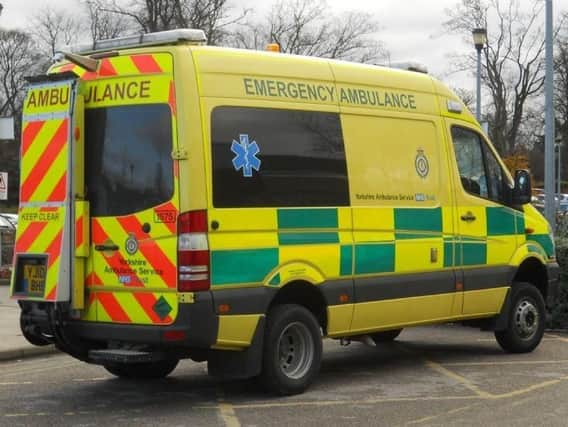Yorkshire's cardiac arrest survival rates are best in country


According to the latest figures, 106 Yorkshire Ambulance Service NHS Trust (YAS) patients whose heart stopped beating were resuscitated and discharged from hospital between January and September 2015, a 20% increase on the same period the previous year.
These figures have been steadily improving over the last few years thanks to a number of initiatives introduced by YAS to help achieve its vision of being a world leader in the management of patients in cardiac arrest.
Advertisement
Hide AdAdvertisement
Hide AdAnd YAS can now boast the highest overall performance for patients in cardiac arrest who go on to survive being discharged from hospital (Utstein*) compared to the other 10 English ambulance trusts. In 2014-15 YAS achieved a survival to discharge rate of 40.9% against a national average of 26.3%. For 2015-16 (the figures for which currently go as far as September 2015) YAS is again top with 41.3% (the national average is 28.2%). So in simple terms, YAS saves a greater proportion of the cardiac arrest patients that it attempts to resuscitate compared to anywhere else in England.
Dr Julian Mark, Executive Medical Director at YAS, praised the first-class efforts of ambulance clinicians and staff in the Emergency Operations Centre and appealed to the public to play a vital role in helping to improve the outcomes for cardiac arrest patients.
He said: “This is great news for the people of Yorkshire. As an ambulance trust, we are committed to becoming a world leader in the management of patients in cardiac arrest. We have implemented numerous initiatives to help us achieve this and will continue to look at new and innovative ways of working for the benefit of our patients.
“However, in order to further improve the chances of people who suffer a cardiac arrest, we need a commitment from the public to learn cardio-pulmonary resuscitation (CPR) so bystanders can perform this life-saving procedure prior to our arrival. If CPR can be started as soon as someone suffers a cardiac arrest, their chances of survival double. What happens before we arrive on scene is crucial and can mean the difference between life and death.”
Advertisement
Hide AdAdvertisement
Hide AdYAS has introduced the following initiatives to help improve the care it provides to patients incardiac arrest:
Enhanced training for staff who take 999 calls so they can rapidly recognise a patient incardiac arrest and give effective CPR instructions over the phone if necessary.
Introduction of Red Arrest Teams across Yorkshire, made up of Clinical Supervisors to provide leadership and extended clinical skills.
Appropriate dispatch of at least ‘three pairs of hands’, plus a Red Arrest Team Leader, to each patient in cardiac arrest.
Advertisement
Hide AdAdvertisement
Hide AdAdvanced Life Support (ALS) training for all Clinical Supervisors.
Introduction of AutoPulse which is an automated, portable, battery-powered CPR device as several studies have shown that automated CPR machines are more effective at providing circulatory support than manual CPR in a moving ambulance.
Dr Julian Mark added: “Long gone are the days when the ambulance service was purely a logistic service to transport a patient to hospital. We are now an advanced life-support service which brings critical care to the patient.”
YAS is also focusing on community-based initiatives including:
Advertisement
Hide AdAdvertisement
Hide Adproviding award-winning CPR training to secondary schoolchildren on Restart a Heart Day (we trained 31,000 youngsters at 146 schools on two days in 2014 and 2015). This year’s event will be held on Tuesday 18 October and schools will are invited to register athttp://www.restartaheart.yas.nhs.uk/ until 29 April 2016.
establishing drop-in CPR training centres across the county as part of our commitment to provide CPR training to one million people in Yorkshire by 2020.
having over 1,040 volunteers who belong to Community First Responder Schemes and are trained to provide life-saving treatment to residents in their area in the vital first minutes of an emergency until our ambulance clinicians arrive.
utilising the resources and skills of other emergency service staff (ie police and fire service) who are trained and equipped to respond rapidly to cardiac arrest patients, particularly in remote and rural areas.
encouraging the installation of life-saving community public access defibrillators.